This New Electric Hovercraft Looks Like a Ferrari, and It’s Coming Soon
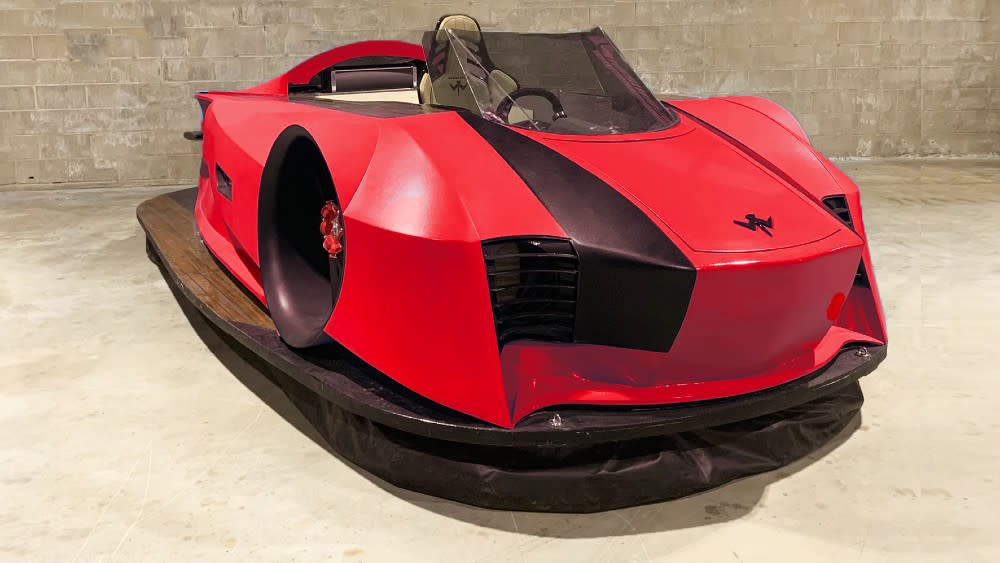
When Michael Mercier, founder and CEO of battery-electric hovercraft maker VonMercier, was a teenager, he had a monthly subscription to Boys’ Life.
“It was the kind of magazine where you could get X-ray glasses, sea monkeys—that sort of thing,” Mercier tells Robb Report. “But there was also a recipe for an air cart where you just needed a round sheet of plywood, an old vacuum cleaner, and a strip of shower curtain material.”
More from Robb Report
Meet the Hoverbike That Could Make Your 'Return of the Jedi' Dreams a Reality
This New Hybrid Hoverbike Can Soar Above the Street at Up to 62 MPH
Meet Arosa, a Supercar of Hovercrafts That Can 'Fly' Over Land and Sea
“I was able to put my little sister on it out in the garage and move it around,” Mercier says. “My mind was just blown.”
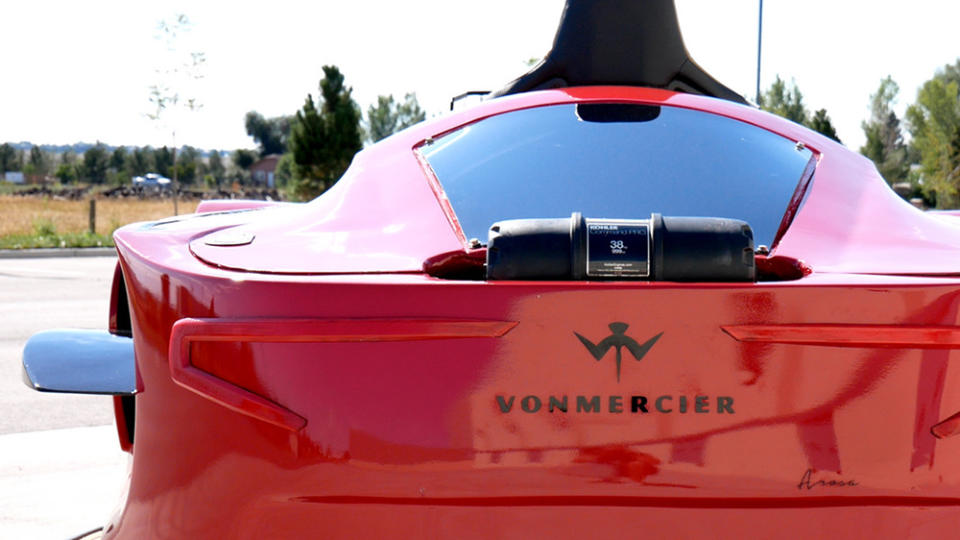
Mercier built more sophisticated versions for school science fair projects. Even as he studied mechanical engineering in college and graduated to corporate roles in product development, “the idea for a better hovercraft was always in my head.”
Hovercraft, which may seem confined to midcentury science fiction and Jetson cartoons, ride on an air cushion that allows it to glide over land or water. Although the core technology has existed for decades, perfunctory models were noisy and difficult to control, according to Mercier. “It hadn’t caught on like ATVs or Jet Skis,” he says. “The idea of personal hovercraft got left behind.”
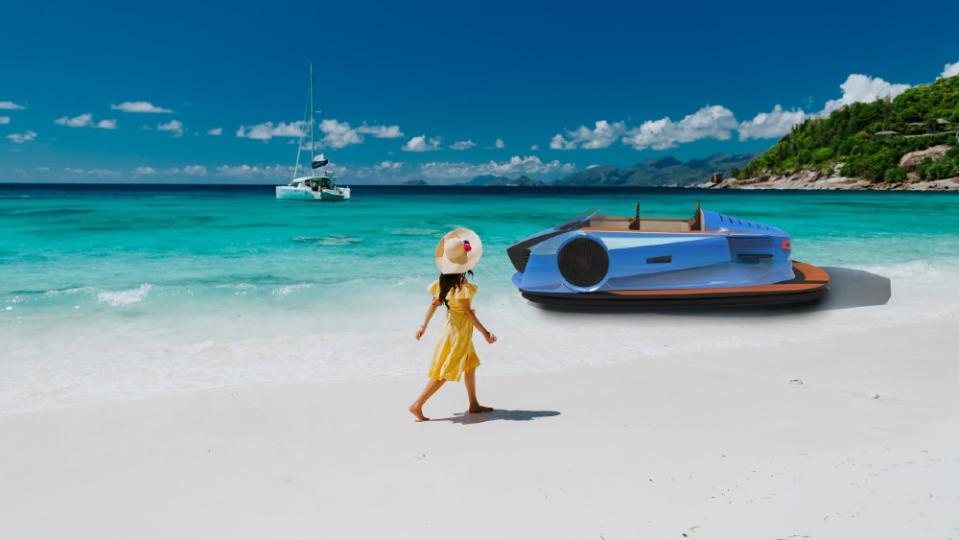
Mercier, 36, is turning his vision into reality. His invention, the $200,000 battery-electric Arosa personal hovercraft, uses a trio of electric motors instead of a traditional gasoline engine. Mercier says the amphibious vehicle can hover about six inches in the air, allowing it to glide over grass, gravel, sand, snow and water.
Hovercraft rely on the physics of thrust and air flow to lift, accelerate, brake, and travel laterally 360 degrees. Instead of brakes, the driver uses reverse thrust to slow the craft on land or stop on water. VonMercier closed a crowdfunding campaign in December that raised $111,000 to bring the Arosa to market.
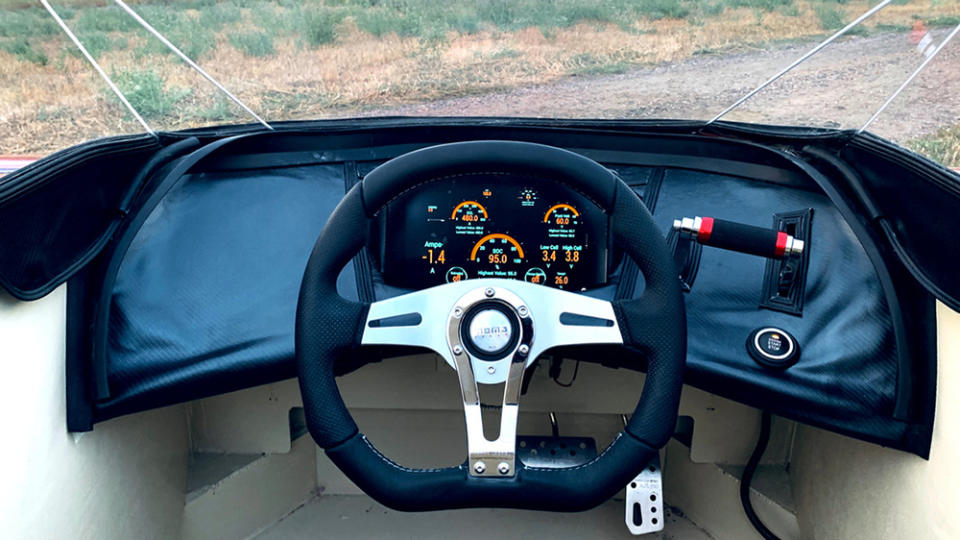
Although the Arosa’s curvy carbon-fiber body evokes the silhouette of a supercar—early mood boards for the prototype included Bugattis, Aston Martins, and a chrome-and-wood concept car from BMW, as well as Chris-Craft boats and B-2 bombers—the hovercraft generates just 240 electric hp and is not street-legal.
Mercier and industrial design partner Ben Taber tinkered with the initial design, which they debuted in 2014 as the Supercraft, over the last decade to create a sleek hovercraft sporting sweeping lines, an aggressive front end, and a rear lower deck large enough for an optional swim ladder.
“The challenge was creating a car and a boat that was not a Frankenstein of those elements,” he says.
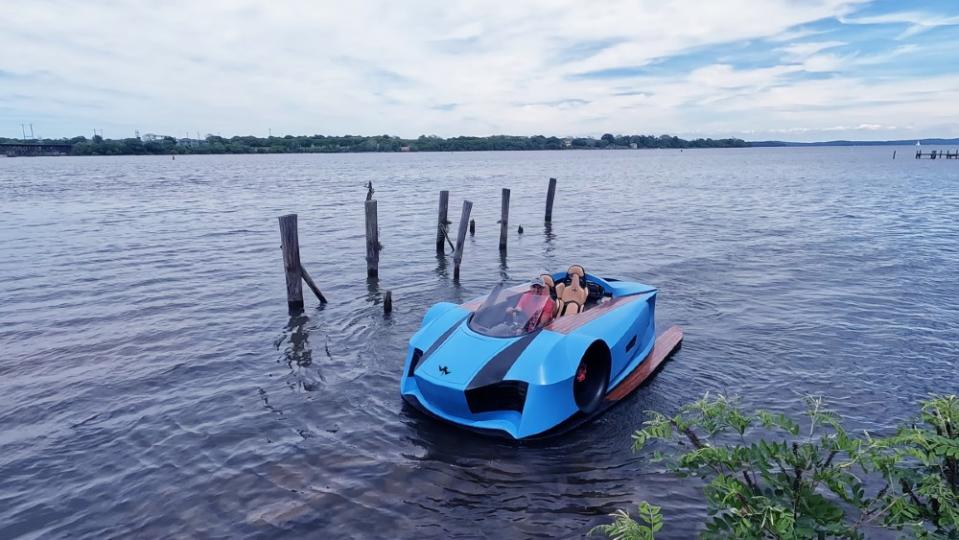
The first seven customer orders are entering production this month, with first deliveries planned for July. Based in Havre de Grace, Maryland, the company has the capacity to build 25 models this year and plans at least to double production in 2024.
Customers can choose between an 18 kilowatt-hour battery for 90 minutes of cruising, or roughly 30 to 40 miles, depending upon factors such as wind speed and water conditions. The 36 kilowatt-hour version can travel an estimated 80 miles over three hours. Both models can plug into any standard electric-vehicle charger.
The Arosa features an open-top cockpit with a driver’s seat and a passenger seat directly behind it. Its 500-pound payload can accommodate up to three passengers with an optional second-row bench seat. Buyers can also customize interior fabrics, wood and carbon accents, and audio and GPS systems.
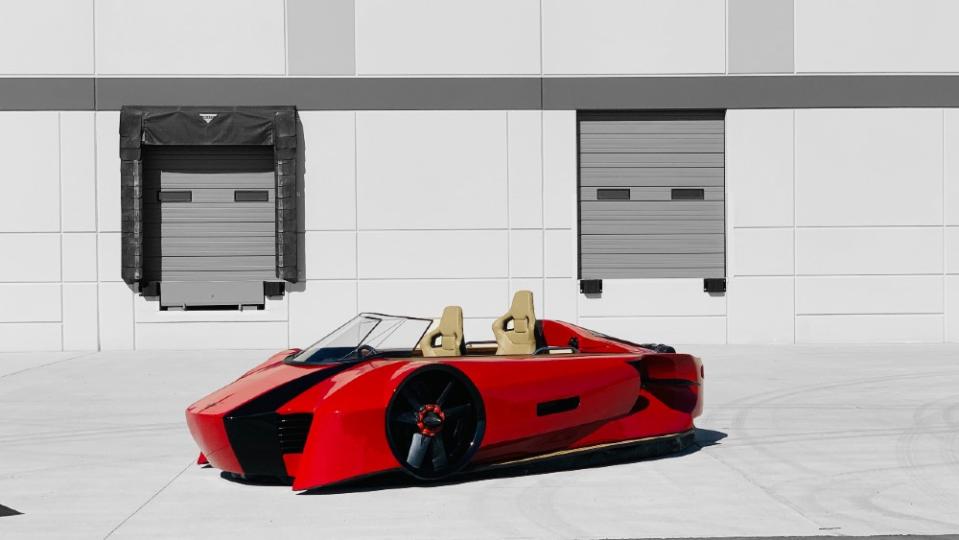
The Arosa cruises comfortably at 20 mph, but the company is still ironing out its top speed, which Mercier puts around 50 mph—far slower than a supercar but the fastest electric amphibious vehicle yet. Its battery-electric powertrain and fan design also make it the quietest hovercraft on the market, according to the founder.
Mercier plans to build two more models over the next decade. The Lucerne is similar to the Arosa but will be built for four to six passengers, while the Olten is targeted toward first-response and search-and-rescue missions for ice, floodwaters, and shallows like mudflats.
“The old product-design mentality is that you either want people to love it or hate it,” Mercier says. “But now we’re disrupting the status quo of how a hovercraft looks and how it’s controlled.”
Best of Robb Report
The 2024 Chevy C8 Corvette: Everything We Know About the Powerful Mid-Engine Beast
The 15 Best Travel Trailers for Camping and Road-Tripping Adventures
Sign up for Robb Report's Newsletter. For the latest news, follow us on Facebook, Twitter, and Instagram.

